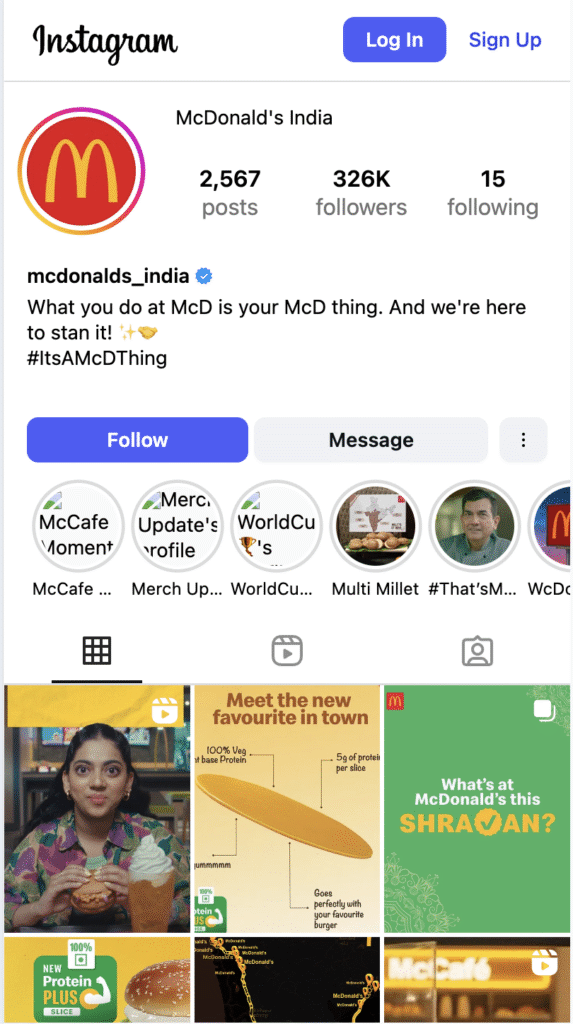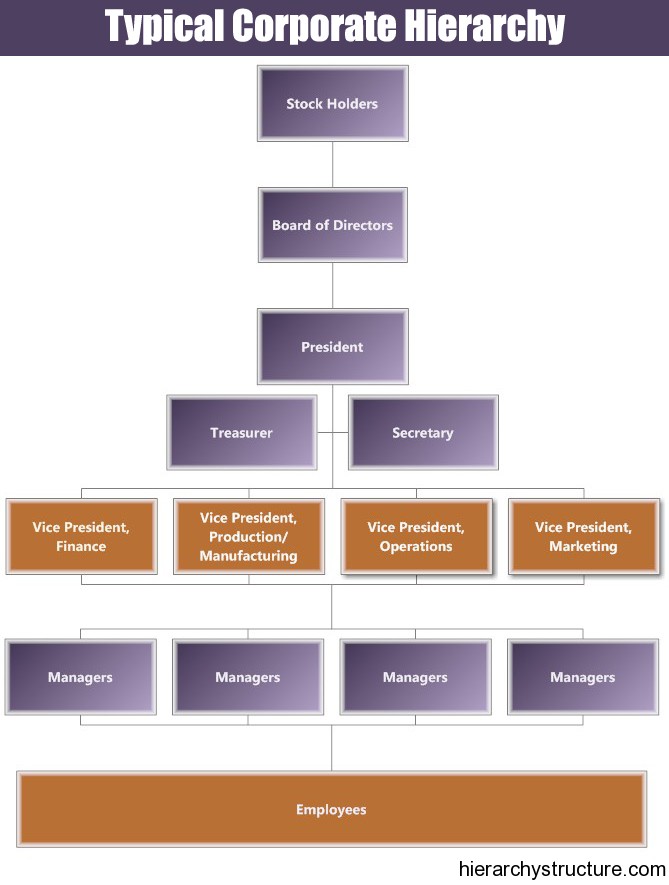
The Best Global Marketing Strategies for 2025
- May 13th, 2025 / 12 Mins read
-
 Aarti Nair
Aarti Nair
Ever tried fishing in a crowded lake?
You toss in your line, but with so many others doing the same, it’s not just about having the best bait. It’s about casting it where the fish actually are. Global marketing in 2025 feels a lot like that lake, except the fish are customers, and the anglers are brands from every corner of the world.
Back in 2021, marketers were already making waves, with advertising and marketing revenues climbing steadily. But something changed by 2024, marketing took the lead, growing by 9.4%, while advertising lagged behind with just under 8%. By the end of the year, global marketing spending had reached a whopping 985 billion U.S. dollars, and the industry is now on the brink of crossing the trillion-dollar mark. Brands and agencies are ready to reel in their biggest catches yet, but only those with the right strategies will truly make a splash.
So, how do you avoid being just another line in the water?
The answer lies in choosing the best global marketing strategies—ones that don’t just follow trends but set them. In this blog, we’ll explore those strategies that have helped brands stand out, scale up, and stay ahead in a fiercely competitive market.
So, what exactly is Global Marketing?
Definition of Global Marketing
Imagine your brand as a musician. In your hometown, you know the crowd’s favourite tunes, their taste in music, and the best time to put on a show. But what if you took your act on a world tour?
Suddenly, you’re playing to audiences with different languages, tastes, and expectations. To keep the crowd dancing, you need a setlist that resonates everywhere you go. That’s global marketing.
Global marketing is the strategy of promoting and selling your products or services to customers worldwide, rather than limiting your focus to one local market. It goes beyond simple translation of content. Instead, it means understanding diverse cultures, adapting your message for different regions, and maintaining a consistent brand identity across all markets.
But it’s not just about being everywhere!
It’s about being relevant everywhere. Whether you’re a startup aiming to reach new customers in Southeast Asia or a global brand fine-tuning your presence in Europe, global marketing helps you scale, localise, and thrive on a worldwide stage.
What are Global Marketing Strategies?
Think of global marketing strategies as your brand’s passport to success around the world. But instead of just one document, you have a toolkit filled with different approaches, each designed to help you connect with diverse audiences across countries and cultures.
Global marketing strategies are the methods a company uses to promote, sell, and deliver its products or services worldwide. But here’s the twist—they’re not just about expanding everywhere. They’re about doing it right. A successful global marketing strategy balances consistency with adaptability. It ensures your brand stays recognisable, but it also respects local tastes, languages, and preferences.
There are different types of global marketing strategies you can choose from, depending on your brand goals and platforms you choose:
1. Standardisation Strategy
This is where you take the “one size fits all” approach. Your product, messaging, and branding remain consistent worldwide. Think of Apple’s sleek devices and minimalist ads—they look the same whether you’re in New York or New Delhi.
2. Adaptation Strategy
Here, you tweak your product or message to suit local tastes. McDonald’s is a perfect example. The brand offers Maharaja Mac in India, Teriyaki Burger in Japan, and McSpicy Chicken in the UK—same brand, but a local flavour. But this is their product offering strategy, but when it comes to marketing, you can see it reflected on their social media pages. For instance, McDonalds has a country-specific Instagram page like @mcdonalds_india. And they get Instagram followers by creating content that would appeal to the local audience.
3. Glocalisation Strategy
A mix of global and local. You maintain a consistent brand image but allow local teams to make small changes. Coca-Cola’s “Share a Coke” campaign swapped its iconic logo for local names in each country, creating a personal connection without changing the product.
4. Transnational Strategy
You maintain a core identity but operate as a local brand in each market. Unilever is a great example—its products may look and feel local, but they are part of a global brand portfolio.
So, which strategy suits your brand best?
That depends on your goals, target markets, and resources. But whichever route you choose, remember—success in global marketing isn’t about being everywhere. It’s about being memorable everywhere.
Difference Between Global and International Marketing
Imagine you own a bakery. If you decide to sell your famous cupcakes in a few neighbouring countries, you’d be venturing into international marketing. But if you decide to take your brand worldwide, ensuring that people in Paris, Tokyo, and New York all recognise your signature flavour and brand story, you’re diving into global marketing.
But beyond just reach, there are some key differences between the two:
Scope and Reach:
International Marketing: Focuses on entering specific foreign markets one at a time. For example, a UK clothing brand selling in France and Germany.
Global Marketing: Takes a broader approach, aiming for a worldwide presence with consistent messaging. Think of brands like Nike, which looks and feels the same in every country.
Strategy:
International Marketing: Customises products, messaging, and strategies for each market. Coca-Cola’s localised flavours (like Vanilla Coke in the US and Lychee Sprite in China) are a classic example.
Global Marketing: Maintains a consistent brand image and strategy across all markets. Apple doesn’t change its iPhone design for different countries—it’s the same sleek design worldwide.
Brand Identity:
International Marketing: Often creates local brand identities in different regions, adapting to cultural preferences. KFC in India has a more vegetarian-friendly menu compared to its outlets in the US.
Global Marketing: Keeps a unified brand identity. Starbucks offers a consistent coffee experience worldwide, with slight local tweaks like Matcha Lattes in Japan.
Decision-Making:
International Marketing: Typically has a decentralised approach, allowing local teams to make decisions.
Global Marketing: Is centrally managed, ensuring consistency in brand voice, product quality, and customer experience.
In simple terms, international marketing is like being a tourist who adapts to local customs, while global marketing is like being a global citizen—consistent, familiar, and instantly recognisable wherever you go.
Why Choose Global Marketing Over International Marketing?
Choosing between global and international marketing is like choosing between being a local celebrity and a global icon. Both have their perks, but global marketing often offers a better ticket to long-term success. Here’s why:
1. Consistent Brand Identity
In global marketing, your brand becomes instantly recognisable, whether someone is in Sydney or São Paulo. For instance, McDonald’s golden arches are a universal symbol of fast food. A consistent brand image builds trust and loyalty faster.
2. Economies of Scale
By standardising products, packaging, and marketing campaigns, global marketing helps you save money. A single global campaign is far more cost-effective than creating customised ads for every country. Think of Coca-Cola’s iconic “Share a Coke” campaign—it used the same idea globally, just changing names.
3. Faster Market Expansion
Global marketing makes it easier to enter new markets. With a consistent brand and message, you don’t need to reinvent the wheel for each country. Apple doesn’t need to create a new iPhone model for each market—it’s one product with global appeal.
4. Streamlined Operations
A global strategy means centralised decision-making, which ensures smooth operations. Instead of managing multiple marketing teams with different strategies, you maintain a single, unified approach. This is why brands like Netflix can launch original series globally with the same promotional assets.
5. Stronger Competitive Edge
Global brands are perceived as industry leaders, giving them an edge over local competitors. When your brand is known worldwide, it has a stronger influence on market trends. Nike doesn’t just sell shoes—it sets global fitness trends.
6. Enhanced Customer Trust
Global brands are seen as more reliable because they maintain the same quality everywhere. Starbucks is trusted globally because customers know they will get the same coffee experience, whether in Milan or Mumbai.
7. Better Data Insights
With a global marketing strategy, you can gather customer data from across the world. This allows you to spot global trends faster and make data-driven decisions. Spotify’s global playlist data helps them understand music trends and personalise recommendations.
What are the advantages of global marketing strategies?
As the footprints of the internet grow larger and larger, the world grows smaller.
Global Marketing has transitioned from a strategy only large corporations could engage in; to a necessity for any company on the internet.
Companies see several gains from selling their products in international markets.
Global Marketing strategy allows your company to access three distinct advantages.
- Product Advantages – The more customers you have using your product, the faster you’ll grow and the more you’ll learn. The additional insight you get from a varied spectrum of customers will help you build a better product/service.
- Cost Advantages – By expanding into more markets, you can reduce costs using economies of scale. Foraying into new markets also gives you access new technology and raw materials.
- Brand Advantages – Tapping into international markets increases global brand awareness of your company. By increasing your customer base, you increase the following your brand commands.
What companies use global marketing campaign?
Companies whose products have an international demand often employ geomarketing strategies.
So, fast-moving consumer goods, clothing, automobiles, banking, and fast food companies are all prime examples of global marketing.
That being said, companies with smaller use-cases also carve a niche for themselves in the internet economy. Smaller software companies often see huge international traction when their products solve a global problem.
The expansion into a global marketing campaign is a four-stage process.
During Stage 1, a company focuses heavily on its domestic market. It ensures its attention is laid squarely within borders.
Through Stage 2, the company still focuses primarily on national operations but exports products to other markets as well.
By Stage 3, business from secondary markets becomes financially viable enough to consider bespoke overseas marketing strategies.
Stage 4 is a full-blown multinational endeavor, with companies aiming to create value by extending its programs and products to serve worldwide markets.
Because of the number of variables in the Global Marketing process, there is no one-size-fits-all timeline companies can follow.
What are some of the best global marketing strategies?
In a world where customers can shop from any corner of the globe with just a click, having a strong global marketing strategy is your brand’s passport to international success. But how do you create a marketing strategy that connects with customers from New York to New Delhi? Here are some of the best global marketing strategies that brands swear by:
1. Standardised Branding, Personalised Messaging
Global brands like Nike and Apple maintain a consistent brand image across countries, but they tweak their messaging to suit local cultures. Nike’s “Just Do It” remains unchanged globally, but local campaigns may feature culturally relevant athletes.
2. Multi-Language Content Optimisation
Speaking your customer’s language goes beyond just translation—it’s about localisation. Coca-Cola’s “Share a Coke” campaign replaced its logo with popular names in local languages, making it a global hit. Ensure your website, social media, and ads are translated and localised for each market you enter.
3. Influencer Partnerships Across Regions
Leverage local influencers to connect with diverse audiences. When Spotify expanded globally, they partnered with local artists in each country to promote their playlists, making their platform relatable to new users.
4. Global Social Media Campaigns
Social media is your gateway to a global audience. Use a mix of global and localised social media strategies. Netflix, for example, uses a centralised global Instagram page but also maintains local pages for countries like India and Brazil, featuring region-specific content.
5. Consistent Customer Experience Across Channels
Starbucks ensures that a latte tastes the same, whether you’re sipping it in Seattle or Shanghai. Maintain a consistent product quality and customer experience across all your locations.
6. Cultural Sensitivity in Marketing Campaigns
Be aware of cultural differences and avoid one-size-fits-all campaigns. McDonald’s localises its menu—offering the Maharaja Mac in India instead of the Big Mac—to respect cultural and dietary preferences.
7. Global SEO Optimisation
Optimise your website for international search engines like Google, Baidu (China), and Yandex (Russia). This includes using the right keywords in local languages, localised meta tags, and country-specific domains.
8. Unified Global Advertising Campaigns
Run global ad campaigns that can be easily adapted to local markets. For instance, Adidas’ “Impossible is Nothing” campaign was a global success because it was rooted in a universal message but featured local sports heroes in different countries.
9. Data-Driven Market Expansion
Before entering a new market, use data to understand local consumer preferences. Amazon used data on online shopping habits in India to tailor their product range and introduce features like “Cash on Delivery.”
10. Localised Pricing Strategies
Adapt your pricing to suit the purchasing power of each market. Spotify’s subscription prices vary by country to accommodate different income levels while maintaining a global brand.
11. Strategic Partnerships and Collaborations
Team up with local brands or global giants to increase your reach. When Starbucks entered China, they partnered with Alibaba for digital payments and delivery, making it easier for local customers to order.
12. Real-Time Customer Support Across Time Zones
Provide 24/7 support to accommodate customers in different regions. Brands like Dell have a global support team that provides customer service around the clock, ensuring no customer is left hanging.
13. Multi-Regional Product Launches
If you’re launching a new product, consider a global launch strategy. Apple’s iPhone launches are global events, with simultaneous releases across countries, creating worldwide hype.
The big basics of global marketing
The blueprint for developing a marketing campaign has four basic steps. In summary, you need to understand the market you’re entering and develop a plan based on those insights.
This will help you avoid the big mistakes companies often make while foraying into international markets.
1. Know the market
The first step in attempting to break new ground for marketing is to understand the ground that you intend to break.
Context is everything. Each country and region has a complex set of sub-behaviors, rules, and rituals they follow.
These will influence the way the customers in through markets deal with marketing content that you put out.
This ranges from the channel of preferred communication to what is considered acceptable marketing material.
This will require extensive research, on a global scale. Much like traditional research, the task is finding what consumers want and planning how to produce those products for them.
Your research will focus on four broad challenges.
- Product – Products may have to be altered to fulfill cultural or legal preferences. The EU and the USA have different safety regulations, which means that cars have to be largely redesigned for each side of the Atlantic.
- Location – How will customers buy your products in the new market? If you’re entering a country with a low internet usage rate, it probably wouldn’t help to launch a massive online undertaking. Here’s where location-based marketing will be of huge help to you.
- Marketing – Different countries have different channels for marketing. In the US, states like Hawaii, Vermont, Maine and Alaska have banned billboard advertisements. South East Asian countries are dominated by apps like Line, Viber, and WeChat.
- Price – You may have to be more competitive in new markets. This will involve reducing prices compared to your competitors. What kind of pricing plan do customers in that country prefer?
Most importantly, however, is time. You may not launch a full support or lead generation stack as you enter a new market.
So customers who have problems with your product may be left stranded as your customer support fails them due to unavailability.
2. Develop a marketing plan
You can’t just change the language in which you market and expect to be successful.
You need to stick to the rigid definitions of your brand that you spent years developing. But you also have to be flexible to change, based on the prior market research.
You could get started off the ground running if you partnered with a local firm. But this could involve sharing revenue and/or trade secrets with potential rivals.
For example, American coffee giant Starbucks partnered with multinational conglomerate Tata to launch the coffee-chain in India.
Some companies even host events and promotions to create a buzz about their products. RedBull, most famously, hosts Grand Prix’s and Soap Box races to advertise itself.
When you’ve built the ideal image, it comes time to decide who will help you spread it. Companies often partner with a marketing agency of their global stature to push the boat out.
International Marketing strategies may include tangibles like creative undertakings, media planning, hoardings, and other mass publicity campaigns.
This also has to be translated, localized and relevant new ones created for specific markets.
It is important to have language agnostic marketing tools at hand, that work for you around the clock.
3. Localize your global marketing approach
While it is easy to write down and document a global content strategy, it’s much harder to put it into practice.
The fundamental challenge for a global team is to build something that local markets would clamor for.
To this end, what worked for your local audience might not work internationally.
Taking your marketing efforts global does not mean you have to give up on localizing your message. You have to act “glocally”.
It is important to understand the cultural and linguistic barriers in front of you, but learning more subtle nuances like holidays and significant events helps too.
Companies often act from the ground up but react from the top-down.
Be sure to adapt your initiatives to fit the audience you are trying to reach to create a customized experience for them.
Use resources at your disposal, like local teams and existing secondary data. A simple task like translating your website is indicative of this challenge.
How do you evaluate the work of someone who has translated your company website? Is it a meaningful translation, or just full of buzzwords?
Speak to the needs of that particular region to market your product or service, and customize your approach for that environment.
Identify leaders in the marketing tools you currently use, in the country you are looking to expand in.
4. Customise your message
Austrian beverage company RedBull is so synonymous with global marketing. So much so that its US customers assume it’s a local brand.
Ask most any company entering a new market, and that’s their wet dream.
Social Media represents the best way to deliver a global message while tailoring it for specific audiences. Kotentino allows you to integrate all your social media activities and maintain a steady workflow on the same.
Airbnb became very successful globally because of social media. In 2015, Airbnb began a social media campaign using the #OneLessStranger hashtag.
5. Global marketing strategy examples
Simple international-friendly policies like multi-currency integration make for much easier customer experiences.
Nike’s NikeID co-creation platform is a prime example of leaping over cultural barriers, by accepting that you don’t know best.
NikeID allows customers to build their own shoes, being able to choose style, texture, and sole.
By putting the power of design into the hands of the consumer, Nike is able to deliver customized products that align with different cultural preferences and styles.
The companies that are torchbearers for global marketing have a local identity that is consistent in different markets.
While the menu in a Mcdonalds in different parts of the world would have different items, it still maintains the same layout. So an American customer could walk into an Indian Mcdonalds and still be able to order a McChicken with ease.
Global brands like McDonalds and Nike have always communicated with the local market in their language and uses their nuances. Multi-lingual QR Codes are a good way to achieve this in international marketing strategy.
Discover the best practices on how to take your marketing strategy to new countries and regions.
Personalization is always the gold standard for marketing.
What not to do in global marketing?
Global Marketing is a challenge. So much can go wrong, and so much will go wrong.
You have to constantly stay on top of your game, even after you’ve made a successful push.
To avert some of the challenges, however, there are corrective mechanisms you can put into place.
1. Non-specification of goals
The world is quite a big place. It’s also filled with a lot of people.
You will have a lot of C level and marketing executives talk about how they “want to expand into Europe”, or “gain market share in Asia”.
This is the first mistake that businesses make. It is problematic to understate the problem.
Asia is a continent with 4.4 billion people. It has over 50+ countries, each of which speaks an entirely different language from the other.
Japanese is not like Chinese, which is not like Hindi or Kazakh.
Grouping them into a single market category is suicidal.
Even beyond the melting pot that is Asia, ask a random group of people to name some “European” countries and map their responses.
To different people, Europe is different things. Europe could be the EU, Western Europe, Eastern Europe, the Eurozone and so on.
Consumers always identify themselves at the local level. Marketing executives need to be cognizant of that fact. International marketing strategies are diverse in nature.
In American and South East Asian countries, even states have their own cultures, laws, payment types, and business practices.
2. No focus on internal information
The larger your company is, the most defined and rigid its hierarchy is. The bigger the dog, the tougher the chain.
Organizations with large workforces have historically struggled with on-their-feet marketing.
As we mentioned earlier, market research is the foundation of a good global marketing strategy.
Companies often find third-party businesses to procure data from. But remember that this data is not representative of your company or even your customer. You must practice the art of data governance, to make sure everyone from the company is on the same page.
You could conduct research yourself, but you’d run into a brick wall of inefficiency. Internal coordination of campaigns across business units is a hurdle for global marketers.
The best way is to get customers to give you the information themselves, over a period of time.
Regardless of how you source the information, there are certain data sets you need.
The potential opportunity in the market, how easy or hard it would be for your business to work in that market, and how successful you already are in the market.
3. Lack of adaptation of sales and marketing channels
A marketing channel is the people, organizations, and activities necessary to transfer the ownership of goods from the point of production to the point of consumption.
From the distribution of goods to the distribution of content, channels differ from country to country.
Facebook has a large presence in Indonesia, making it the ideal channel of distribution. However, e-commerce isn’t particularly pervasive.
So your typical channels for Indonesia are an online distribution of content with an offline distribution of products.
Each country in each continent needs a different channel approach.
Take, for example, post-sales support. What is the point of having a robust email support channel if your target market prefers live chat?
4. No adaptation of product offerings
Your product that knocked the socks off everyone at home, may not achieve the same results in international markets.
Very often, businesses attempt to wing it. They launch the same product in varying markets and try to tweak it based the response.
At the end of the day, they’re ignoring an entire subset of their customers.
Products fail to work for various reasons.
The product could be too complex for developing markets, you might have to launch with a trimmed-down version of your offerings.
Conversely, your product could be underdeveloped. You could take the time to add additional features.
Price parity is also a challenge that companies struggle to deal with.
You could try to undercut the competition, but ask yourself if it’s necessary to cut your margins.
In a market with a relatively inflexible demand curve, you’d be better off fighting competitors in a feature market.
Top Tips for Crafting a Winning Global Marketing Strategy in 2025
Building a successful global marketing strategy in 2025 isn’t just about going big; it’s about going smart. With technology advancing faster than ever and customer preferences changing rapidly, brands must stay agile and customer-focused. Here are some expert tips to help you stay ahead:
1. Embrace Omnichannel and Multilingual AI Agents
In 2025, customer expectations are all about convenience and personalisation. Make your brand accessible across channels—social media, email, websites, and messaging apps—using omnichannel AI agents. Whether your customer speaks English, Spanish, Mandarin, or Swahili, AI agents can instantly translate and respond in their preferred language. Brands like Sephora and H&M use AI-powered chatbots that seamlessly switch between platforms and languages, offering 24/7 support without breaking a sweat.
2. Prioritise Hyper-Personalisation with AI
Customers no longer respond to generic messages. Use AI to analyse customer behaviour, preferences, and purchase history to deliver hyper-personalised recommendations and offers. Amazon is a pro at this, suggesting products based on your browsing history and recent purchases.
3. Invest in Localised Content Marketing
Don’t just translate—localise. Your content should not only speak the local language but also reflect local customs, values, and trends. When KFC entered China, they localised their menu with rice dishes and spicy chicken tailored to local tastes, making the brand instantly relatable.
4. Conduct Data-Driven Market Research
Before entering a new market, use data analytics to understand local customer preferences, purchasing power, and cultural nuances. Tools like Google Trends, Statista, and local social media insights can help you identify trends and refine your strategy.
5. Optimise for Local Search Engines and Voice Search
SEO isn’t one-size-fits-all. Optimise your website not only for Google but also for regional search engines like Baidu (China), Yandex (Russia), and Naver (South Korea). With the rise of voice search, ensure your content answers common voice queries in a natural, conversational tone.
6. Use Strategic Pricing for Different Regions
Global doesn’t mean uniform. Adapt your pricing strategy to match local purchasing power. Streaming giant Netflix uses region-specific pricing, making it affordable for users in emerging markets while maintaining premium rates in mature markets.
7. Collaborate with Local Influencers and Brand Ambassadors
Local influencers have a massive impact on purchase decisions. Partner with influencers who resonate with your target audience in each region. For instance, when Pepsi wanted to capture the Indian market, they roped in Bollywood and cricket stars who have a massive following.
8. Maintain Consistent Brand Identity, with Local Flavour
Consistency is key, but so is relevance. Keep your brand identity intact across regions but add a local twist to make it relatable. Coca-Cola maintains its iconic red branding globally but localises its campaigns to reflect regional festivals, languages, and traditions.
9. Streamline Cross-Border Logistics and Payments
Make it easy for customers to buy from you, no matter where they are. Partner with reliable international logistics providers, offer multi-currency payment options, and ensure secure cross-border transactions. Shopify’s multi-currency feature is a great example of making global payments simple.
10. Leverage Regional Ad Platforms and Trends
Don’t just rely on global advertising platforms like Google or Facebook. Explore local platforms like WeChat in China, VK in Russia, or Line in Japan. These platforms offer powerful advertising options tailored to local user behaviour.
11. Be Culturally Sensitive in Campaigns
A campaign that works well in one country can flop in another if it isn’t culturally appropriate. Conduct thorough cultural research to avoid misunderstandings. When McDonald’s launched in India, they removed beef from their menu, respecting the dietary preferences of the majority.
12. Measure, Analyse, and Optimise Regularly
A global strategy is never set in stone. Use analytics tools to monitor your campaigns, assess their performance in different regions, and make necessary adjustments. Regular A/B testing can help you find what resonates best in each market.
Ready to Go Global? It’s Time to Strategise Smartly!
In 2025, going global isn’t just about reaching more customers—it’s about reaching them the right way. With a solid global marketing strategy, you can speak your audience’s language (literally and figuratively), leverage cutting-edge AI tools for personalised interactions, and tailor your offerings to local preferences.
Remember, a successful global strategy is a blend of consistency and adaptability. Keep your brand identity intact while allowing room for local flavours. Test, learn, and optimise regularly to stay ahead.
Ready to take your brand to the world stage?
Start by analysing your current strategy, identifying new markets, and adopting the tips shared in this guide. The world is your market—now it’s time to make your mark.












